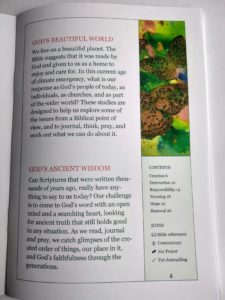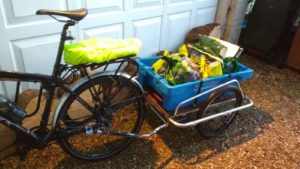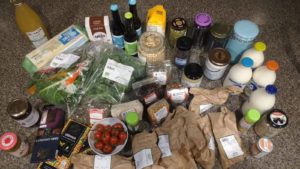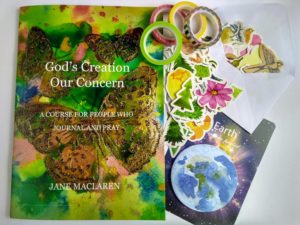It was about a week before New Year that I was sitting hunched over my computer writing the 2020 Lent Course for Bible Journalling UK when my youngest came into the room: “I think we should give up buying food with plastic packaging. I was going to make it a New Years’ resolution but we need time to plan. Let’s give it up for Lent!”
“That’s fine” I said, still deep in thought over the Lent course. But after she had left the room I realised what I had done. Give up plastic? Is that even possible? I thought of things like crisps and biscuits, satsumas with nylon nets and plastic labels, frozen peas. Even glass jars have little plastic security collars these days. What a nightmare! Could we really feed our family without plastic? I might have to try and dissuade her from going the whole (vegan) hog.
I turned back to my computer screen and saw what I had just typed: the introduction to the Lent course: ’God’s Creation Our Concern’.
“We live on a beautiful planet. The Bible suggests that it was made by God and given to us as a home to enjoy and care for. In this current age of climate emergency, what is our response as God’s people of today, as individuals, as churches, and as part of the wider world?”

As every preacher knows, you can’t just spout ideals in a sermon. If you aren’t prepared to try and live it yourself you may as well go home. The same applies to writing Lent courses. Plastic-free Lent it is then!
Fast forward to last Saturday and we’re about to do the first plastic-free shop. Armed with lists, price comparisons, menus and empty containers, we get on our bikes. It’s a beautiful Spring day, albeit cold. We set off down the road. The crate on the bike trailer had come loose and banged the frame on the uneven road surface. It sounded dreadful. I let the trailer get ahead and lagged behind the others hoping people wouldn’t assume I had aspirations as some new incarnation of Mrs Good. Felicity Kendal I am not!
The first shop was an Aladdin’s cave of narrow aisles and high shelving. Finding things took ages due to our unfamiliarity with the layout. Lots of their products did have plastic but we enjoyed their biodegradable cellulose packaging range: nuts, dried beans, pulses, dried fruit. All good so far.
We emerged from the shop and realised that our brief Spring was now over. As we loaded the bike trailer the sleet came down in thick sheets. We hadn’t brought gloves. By the time we reached the second shop our hands were bright pink with blue blotches, spiked with pain from the cold. We started to fill our containers from the big sacks and vats. It took ages to negotiate the tiny space with all our bags, weigh the containers, fill them up, weigh them again and attach the various labels. Before we were finished the shop was closing. However they had milk in glass bottles. Win! But they only had blue top. My sylph-like daughter informed us that full-fat milk is better for you anyway. Definitely no chance of Felicity Kendall now.

By the third shop we had most of the things on our list except the fresh fruit and veg. The prices in the shops we had visited so far were awfully expensive for these so we ended up in our trusty local supermarket and made full use of their loose produce aisle, with the help of cloth veg bags.
Three hours and four shops later, we arrived home with our haul, sopping wet, freezing cold and mildly triumphant. It was a start but if we have an identical experience every week I’ll go crazy! I’m hoping that next week will be dryer, warmer, and quicker as we get used to the layout of the shops and what to buy from each one.
I’ll let you know how we get on.

In the meantime, on the plus side I can still eat chocolate. (As long as it’s not wrapped in plastic.)
You can get the Lent study journal here. It does not suggest you should give up plastic!
Or get the full creative journalling kit including the study journal here.
If you want to run the course at your church you can get discounted journals and group materials plus leaders notes. Email Jane for more info.
